WORKING WITH PARTNERS TO ACHIEVE OUR GOALS
In our work with partners, adhering to certain principles when our name or brand is used protects the brand.
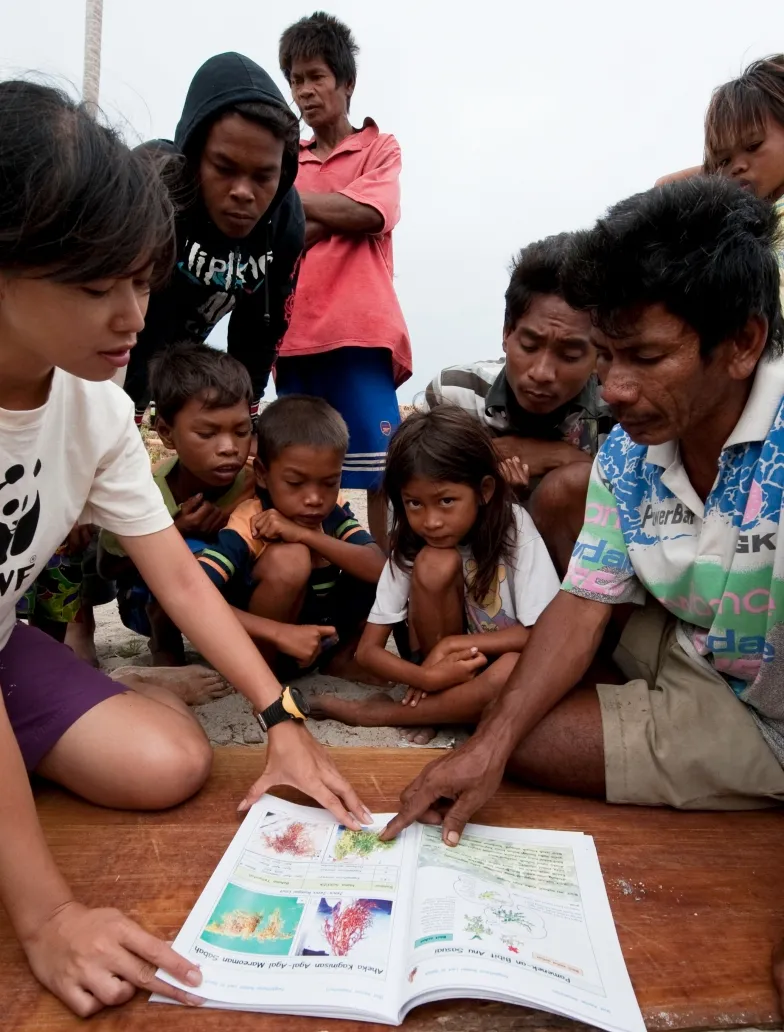
Partnership agreements (with a company or a merchandising programme of a local WWF office) often include licensing of the WWF brand and trademarks. Similar to our own merchandising products, this helps us to communicate our message to a wider audience that we would not normally reach otherwise.
The licensing guidelines are an extension of the partnership guidelines. The following guidelines focus on the use of WWF trademarks on physical (e.g. on-pack) and digital (e.g. e-commerce) products.
When we associate ourselves with a product, service or campaign, we have a responsibility to protect the WWF brand and ensure that we are represented in a way that is consistent with who we are and what we are trying to achieve.
IMPORTANT NOTES: Any use of WWF trademarks by third parties must be appropriately defined within a contractual licensing agreement. A contract that includes the licensing agreement must be signed before using the guidelines on this page. Make sure you consult the Corporate Partnership Rules and Guidelines (only available for WWF staff) for the latest guidance, and contact the relevant team – corporate, public sector or fundraising – when creating merchandising or licensing the WWF trademarks locally or globally.
Key principles
Items associated with WWF need to follow the highest standards for sustainability covering environmental as well as social criteria: our credibility depends upon it – it should not be about meeting basic standards but trying wherever possible to exceed them.
Whenever our name or brand is associated with a product, service or campaign the following principles should be applied:
1. SUSTAINABILITY FIRST
2. PROVIDING CONTEXT
- The context of the partnership must be clear to our audiences, with a partnership statement that explains the partnership aims visible at all times. Audiences must understand why WWF is on the product at a glance.
- While we are flexible about where the logos and partnership statement appear, please make sure they are visible together.
3. PURPOSE
Items must have a worthwhile purpose so make sure they are not gimmicky, with limited use. They have to be desirable in their own right; the association with the WWF brand should not be the only reason someone buys them.
4. OPTIMISTIC MESSAGING
Use friendly, inspiring and engaging imagery and messaging that fit with WWF and our mission – avoid anything that seems threatening or aggressive. More information is available on our tone of voice and photo and video guidelines.
5. ENGAGING
DOS & DON’TS
These “Dos and Don’ts” will help you develop your brand elements in licensing partnerships.
CLEAR AND VISIBLE PARTNERSHIP STATEMENT
Do

Don’t
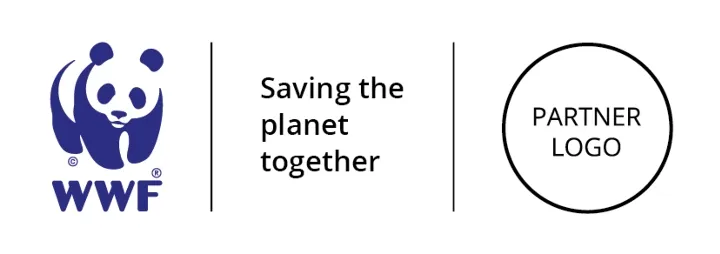
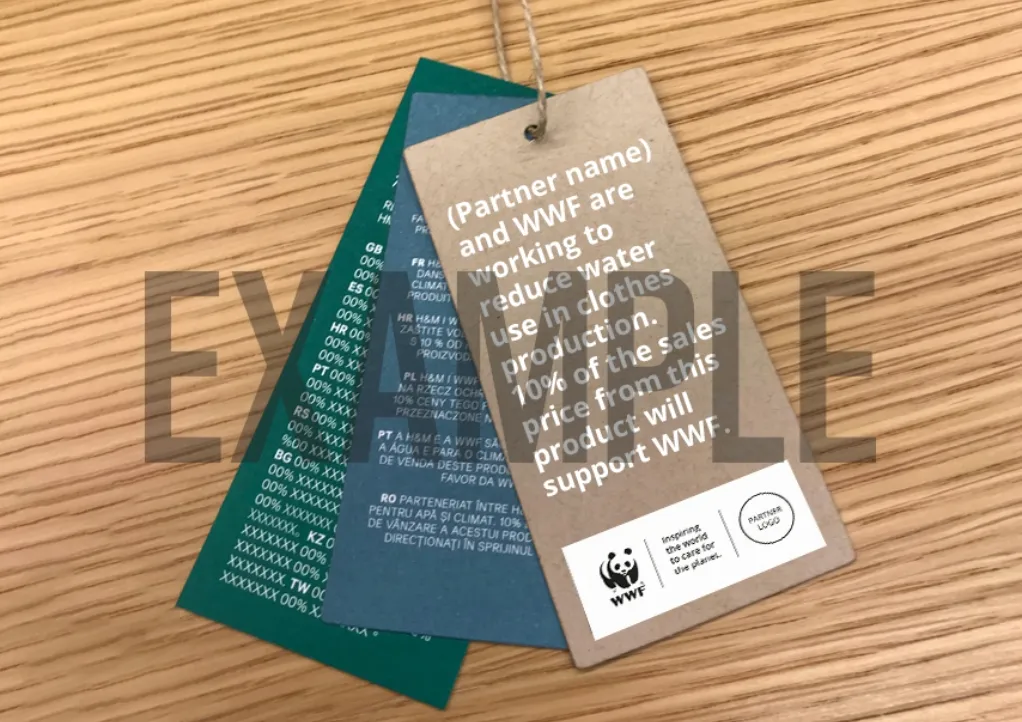
The partnership statement is not and should not be used as a marketing slogan.
Do not use vague or unclear partnership statements.
Do not alter or modify the WWF Logo in any way.
USE ON POINT-OF-SALE MATERIALS BUT NOT ON THE PRODUCT
Do
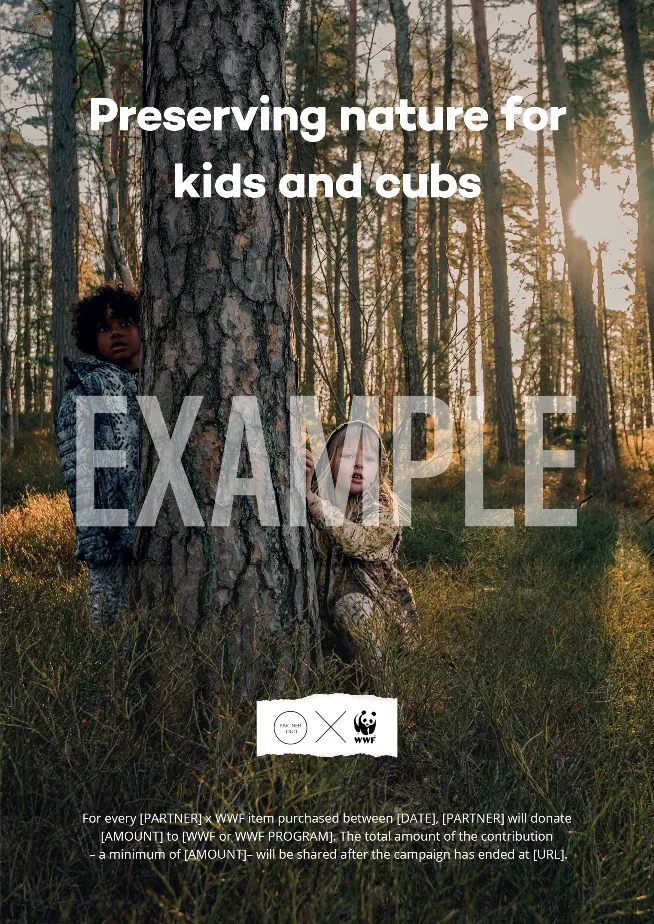
The WWF logo can appear on partner in-store communication. There is flexibility in the design elements since this appears in ‘their world’ but the partnership statement is always clearly displayed:
For every [PARTNER] x WWF item purchased between [DATE], [PARTNER] will donate [AMOUNT] to [WWF or WWF PROGRAM]. The total amount of the contribution – a minimum of [AMOUNT]– will be shared after the campaign has ended at [URL].
If space is limited, the shorter version of the statement is used: [PARTNER] is partnering with WWF to raise funds for [PROGRAM]. For more information, visit [URL].
Make sure you check local requirements and legal requirements with the appropriate team.
Don’t
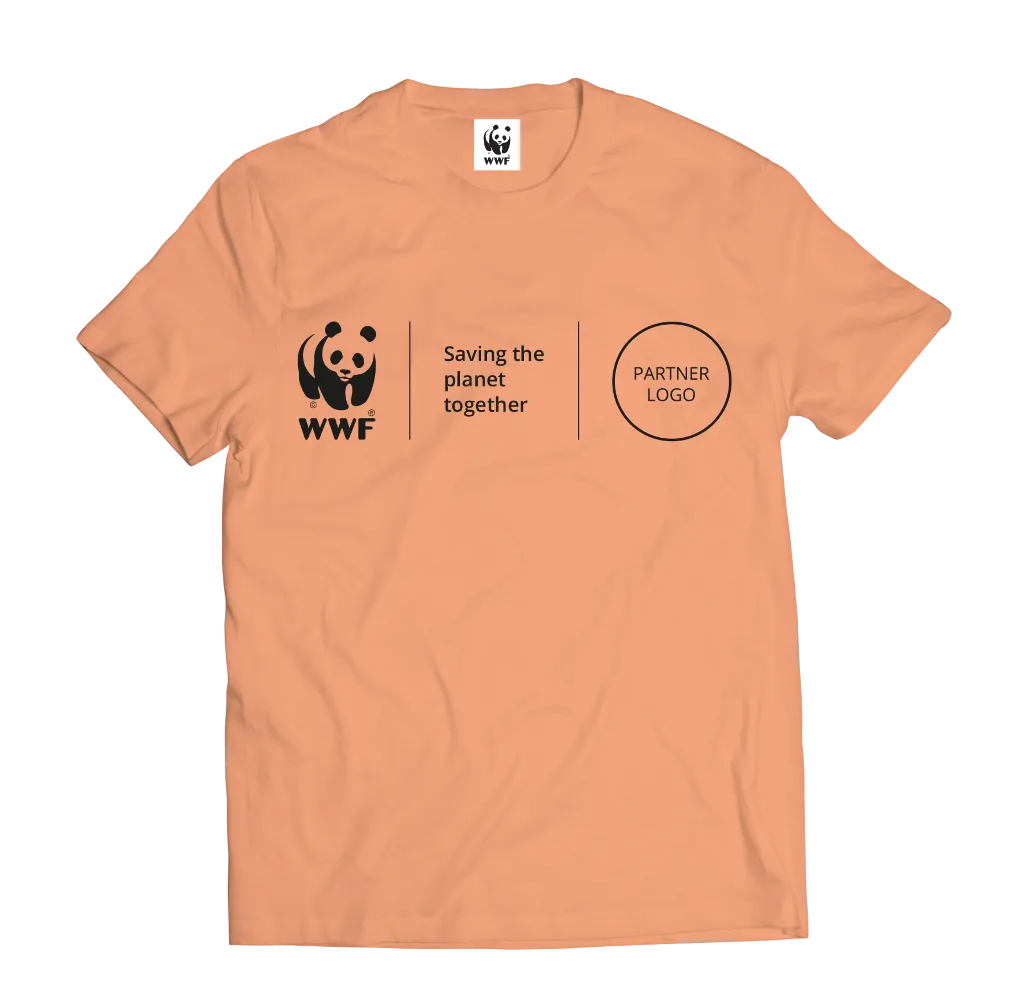
The WWF logo should not appear on the product.
Do not use vague or unclear partnership statements.
Do not alter of modify the WWF logo in any way.
LOOK OUT FOR FALSE CERTIFICATION OR ENDORSEMENT
The certification scheme (such as MSC, FSC, etc.) or other relevant eco-labels should appear on the front of the product along with the product/service information. The WWF logo is not and should never be seen as a certification scheme or an endorsement of the partner. We work with partners for many different goals but we are not a certification scheme and should never be seen as such.
The WWF logo must always appear as a secondary logo, alongside the partnership statement.
They should both appear on the side or back of the product/asset/packaging/communication, not at the centre of the communication/product.
To avoid any misinterpretation, we recommend the addition of the following disclaimer: WWF does not endorse any product or service. For more information on this partnership, visit [partnership URL].
And remember, always add the legal text that accompany the WWF logo: WWF® and ©1986 Panda Symbol are owned by WWF. All rights reserved.
Do
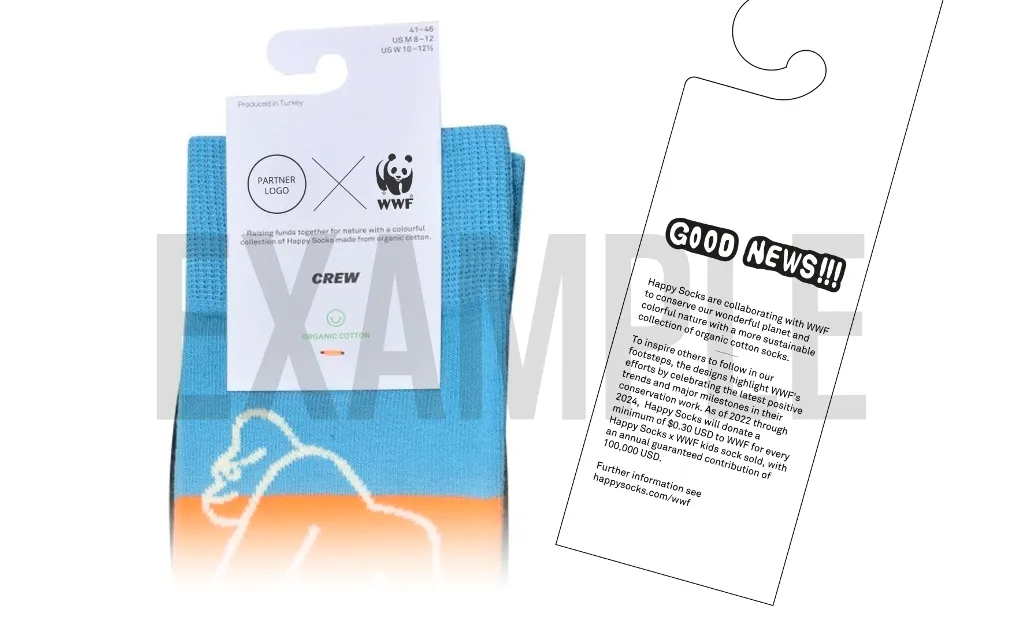
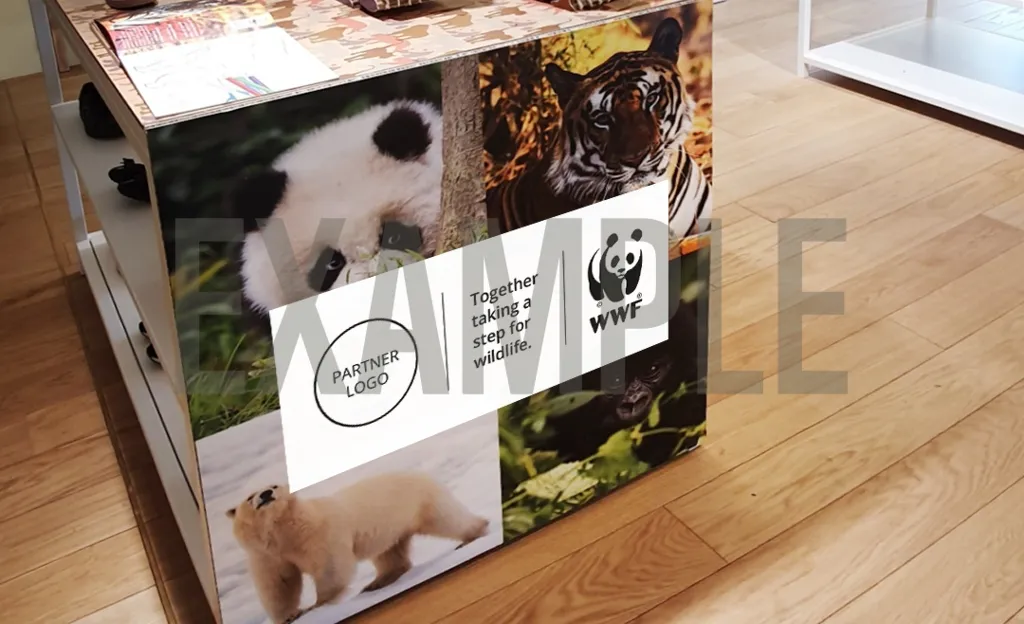
Verified certification schemes and standards logos are displayed on secondary packaging or hangtags of products. There is flexibility in the design elements since this appears in ‘their world’ but it still has the partnership statement that clearly defines the scope of the partnership and includes a URL for more information on the partnership.
The WWF logo appears as a secondary logo, alongside the partnership statement, and on the side of communications.
Don’t
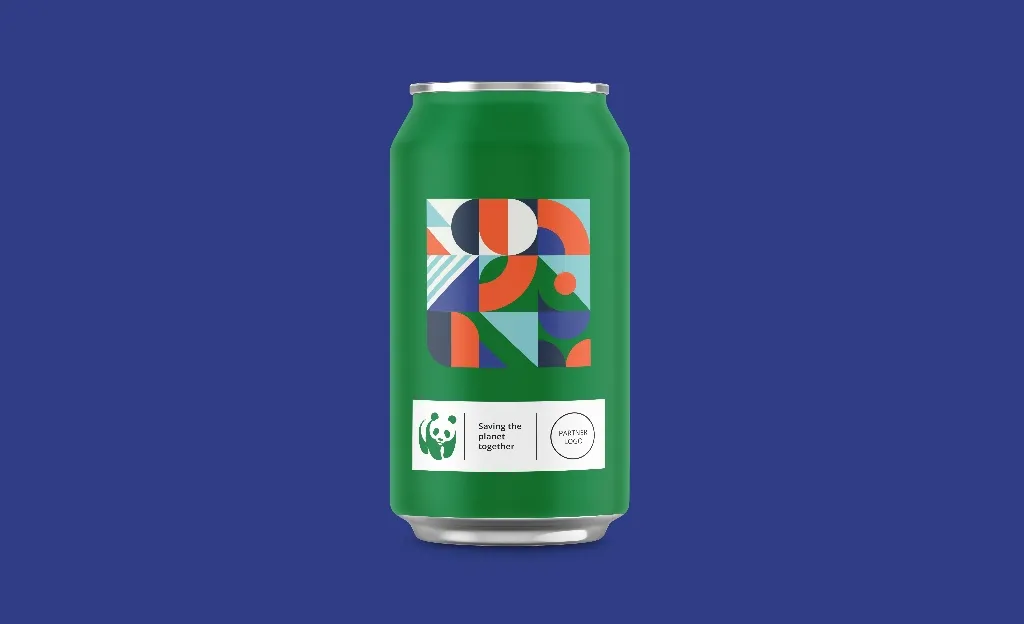
Do not put the WWF logo at the centre of the communication/product.
The WWF logo is not and should not be seen as an endorsement scheme.
Do not modify or alter the WWF logo.
Do not use outdated versions of the logo and or the badge. Make sure your design is clear and balanced. More information on how to use our logo and partnership badge is available.



